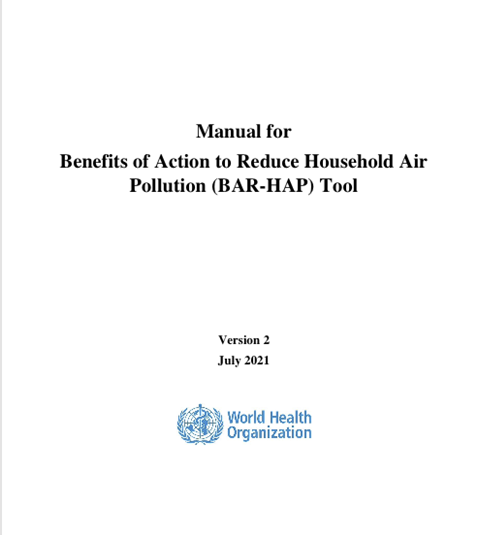Manual for Benefits of Action to Reduce Household Air Pollution (BAR-HAP) Tool (Version 2, July 2021)
20 July 2021
| Technical document

Overview
Household air pollution (HAP) from the combustion of dirty fuels in inefficient devices is a significant risk to health. WHO estimates that HAP exposure from cooking is responsible for around 3.8 million deaths each year1. Despite increasing awareness of these risks, around 3 billion people continue to rely on polluting fuels and technologies for their daily cooking needs2. Dirty cooking systems release high concentrations of pollutants including particulate matter and carbon monoxide, leading to serious cardiovascular and respiratory illness among other health impacts.
In recognition of the adverse health, environmental, and climate impacts of inefficient cooking, Sustainable Development Goal 7, Target 7.1 calls for universal access to affordable, reliable, and modern energy services. Progress towards this goal is tracked with Indicator 7.1.2, the proportion of the population with primary reliance on clean fuels and technologies, where clean is defined by the WHO Guidelines for indoor air pollution: household fuel combustion3.
This ‘benefits of action to reduce household air pollution (BAR-HAP) tool has been developed to assist stakeholders in the cooking energy sector calculate the national-level costs and benefits of transitioning to various cleaner cooking options. BAR-HAP allows users to select a transition (or multiple transitions) to cleaner cooking fuels or technologies, as well as policy interventions to apply to the transition scenario(s).
WHO Team
Air Quality, Energy and Health (AQE)
Editors
WHO
Number of pages
61
Copyright
© World Health Organization 2021
